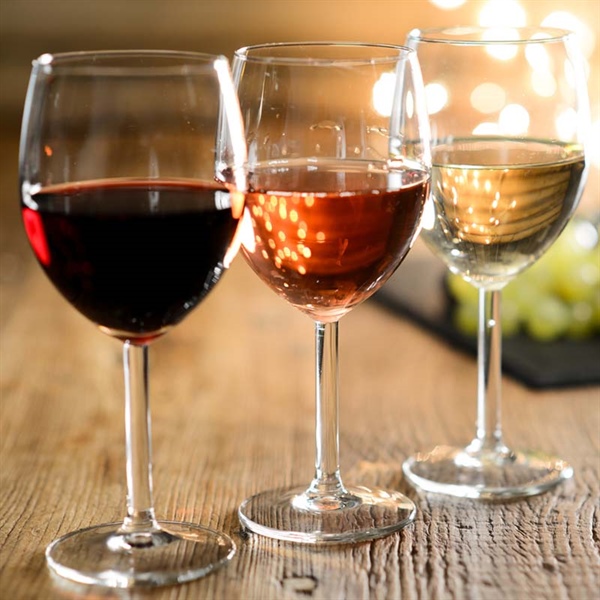By: Nan McCreary
Like many of us, you may find yourself in a wine rut, drinking the same bottles of Chardonnay or Pinot Noir over and over again. Well, it’s a new year, and there’s no time like a calendar change to try new adventures, whether it’s to climb Mount Everest, or much easier, to try a new wine adventure. Here are some wines that may not be on your radar but are certainly worth giving a try.
Orange Wine
Orange Wine is NOT made with oranges: Rather, it is made with white grapes, with juice staying in contact with skins and seeds to give it its color. Orange wines date back thousands of years to Georgia in Eastern Europe, where wines were fermented and aged underground in large earthenware vessels called in Qvevri. The style spread to Slovenia and Friuli-Venezia Giulia in Italy, where it is still popular today.
These wines have been described as robust and bold, with honeyed aromas of jackfruit, hazelnut, brazil nut, bruised apple, wood varnish, linseed oil, juniper, sourdough and dried orange rind. The wines are big and dry with pronounced tannins. While not all orange wines taste alike, they have been described by some as “the new rosé,” or “the perfect middle ground between that rosé wine refresher and that chilled red wine body and texture.” These wines pair really well with meat and seasoned or spicy dishes. Definitely try them with Texas barbeque.
Natural Wine
One of the hottest new wine trends is natural wine. There seems to be no uniform definition, but most agree that it has these characteristics:
• Organic: no pesticides or herbicides
• Hand-picked/hand-harvested grapes
• Minimal intervention/no additives in the winemaking process (there are over 72 legal additives allowed in winemaking and many of them end up in conventional wine)
• Use of only naturally occurring native yeasts that live in the air and on the surfaces of the fermentation equipment
• No filtering or fining to remove sediment leftover from the winemaking process.
So how ARE these wines? Some describe the taste as funkier, gamier, and less fruity and yeastier. Natural wines are often cloudy because they are not fined or filtered, but that’s no deterrent to their fans. Enthusiasts love that these wines are more eco-friendly, and that when opening a bottle, you know exactly what you are drinking. This can be important in a day and age when so many are greatly manipulated. For many, natural wine is a lifestyle choice, or at least an opportunity for a new tasting adventure.
Pét-nat
You’ve probably heard the buzz about pét-nat, but have you tried it? Pét-nat, is an abbreviation for “pétillant naturel,” a French term that roughly translates to “naturally sparkling.” Unlike Champagne, which is fully fermented and then undergoes a second fermentation in the bottle, pét-nat is bottled before completing its first fermentation, allowing carbon dioxide (source of the bubbles) to be produced by the natural sugars found in the grapes. The French call this the “méthode ancestrale,” which was originally used in Southern France in the early 16th century and is the oldest way of making sparkling wine.
Pét-nat is not a style, but a method. Therefore, winemakers are experimenting with grapes that go beyond the narrow range of grapes traditionally used in Champagne, with results that express a wide range of aromas and flavors. Generally, pét-nats have a light and fizzy mouthfeel and are low in alcohol. They are usually completely fermented and dry, but a slight touch of sweetness may remain in the wine. Because it’s a natural wine, the end-product is often unpredictable. You can be sure, however, that you will have a spontaneous and fun drinking adventure with something “fresh and alive” in your glass.
Non-Alcoholic Wine
Non-alcoholic wine may seem like an oxymoron, but it has taken the beverage market by storm. In true non-alcoholic wine, grapes are fermented, vinified and created as a fully alcoholic wine. Then the alcohol is removed either by a spinning cone, reverse osmosis or vacuum distillation. The resulting wine may actually have a trace of alcohol — usually no more than .05% — but it still offers an option for moderating your wine intake.
Like all products, there are good non-alcoholic wines and bad ones. The challenge for the winemaker is to enhance the flavors and textures that may be removed during the dealcoholizing process. Some wine producers add botanicals such as green tea or even cannabis-derived ingredients to add texture to the wine, while others are experimenting with proprietary de-alcoholization methods that preserve the freshness of the wine. With the popularity of non-alcoholic wines on the rise, these wines are bound to get better and better. In the meantime, if you want to experiment, visit Sipple, a non-alcoholic bottle shop near Rice Village, to expand your better-for-you horizons.
The aforementioned wines are available at many local wine shops, bars and restaurants. While you’re making your New Year’s resolutions, add “Have a New Wine Adventure” to your list. Whether you try an orange wine, a non-alcoholic Wine, or something really weird like Barefoot x Oreo Thins Red Blend, you will be climbing out of your wine rut…and having some fun along the way.


